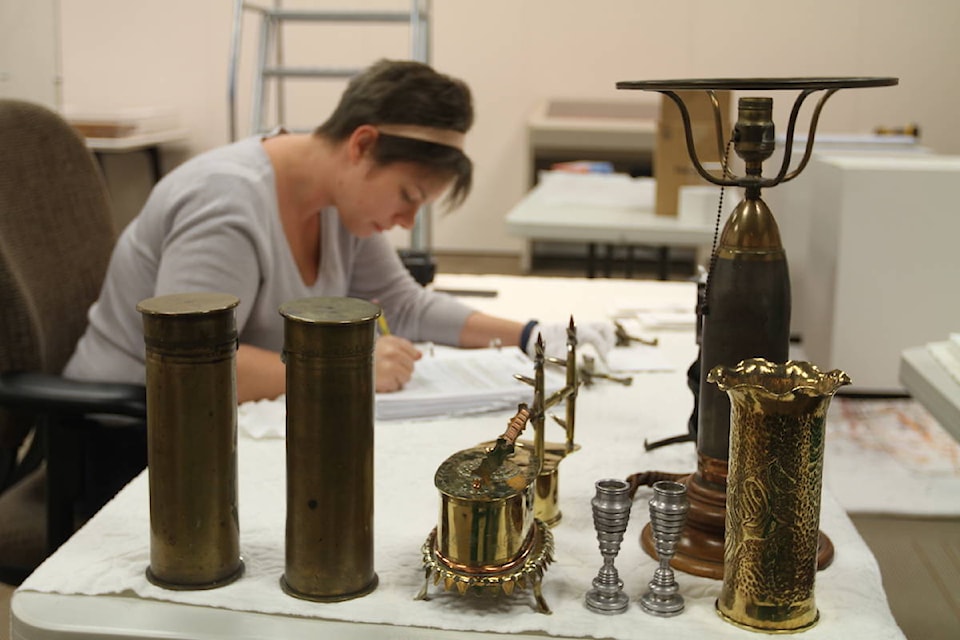There are jugs made of whizz-bang artillery shells from 1916, and “sweetheart” brooches cut from Second World War airplane metal.
A Canadian soldier serving in Afghanistan hammered out religious symbols from spent .50 calibre rounds. His first brass cross was made for a padre to carry into the field.
The human drive for creation — even amid mass destruction — can be seen in the Keepsakes of Conflict: Trench Art and Other Canadian War-Related Craft exhibit at the Red Deer Museum and Art Gallery.
The museum’s executive-director Lorna Johnson finds it fascinating to imagine soldiers in adverse conditions creating beautiful objects to keep their hands and minds busy. “They have these intense situations of conflict, and then long periods of nothing to do…
“Crafts might have been something like therapy, keeping their focus on home,” she said.
The travelling exhibit, compiled by the Moose Jaw Museum and Art Gallery, has an opening reception tonight during the First Friday gallery openings in Red Deer and continues to Nov. 19.
More than a century of war art is on display — not created by official painters sent to record soldiers’ experiences at the front, but by the soldiers, themselves, who created mementos to send home as a connection to loved ones.
A soldier looking for scrap materials to recycle into art would have found plenty, said Johnson. “There was the waste of life, to begin with, but also a lot of wasted materials” — so many bullet casings, disabled vehicles and weapons and dead horses.
Many of the articles are impressively wrought — such as an Art Nouveau vase, embossed out of a field gun shell by Albert Leitch, an American soldier who moved to Saskatchewan after serving in the First World War.
A cottage scene was painted on wood by a prisoner of war, while a woolen peacock was embroidered by a First World War soldier, who suffered shell shock and was convalescing from hand surgery in a British hospital. The activity of putting needle into canvas served as good physiotherapy for Frank Neville Read, who regained use of his arm and hand.
Some of the pieces are simply poignant — such as the small, woolen Izzy doll, named after Canadian soldier Mark Isfeld, who was killed by a land mine in Croatia.
The first knitted dolls were made by his mother, Carol, for distribution to Croatian children. But more than a million of them have since been knit by various volunteers and distributed to children in war-torn countries.
Rory Cory, curator of the Military Museums of Calgary, will speak about the exhibit on Oct. 15 at 2 p.m. Red Deer poet Paul Boultbee will read from soldiers letter home on Oct. 1 and Nov. 11, both at 2 p.m. at the museum.
lmichelin@reddeeradvocate.com
